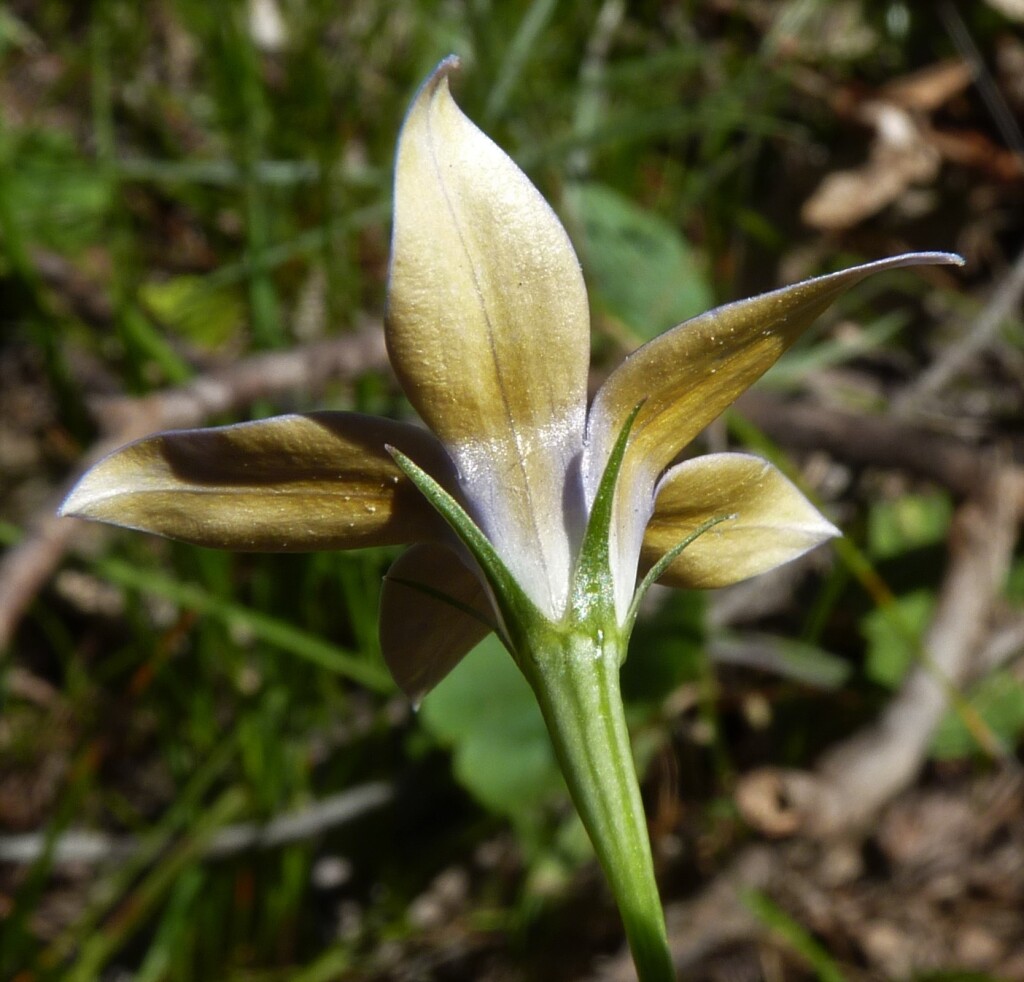Wahlenbergia luteola
P.J.Sm.Perennial with thickened taproot; stems few-many from base, freely branched, sometimes sub-shrubby, wholly glabrous or shortly hirsute near base, erect, to c. 60 (commonly c. 30) cm high, usually leafy for the greater part; leaves opposite throughout or becoming alternate above base, linear (or the lowermost narrowly elliptic or oblanceolate), 5–60 mm long, 1–2(–4) mm wide; margins entire or with a few small callus-teeth. Hypanthium narrow-obconical, 3–7 mm long, glabrous; calyx-lobes erect, narrow-triangular, 3–8.5 mm long, glabrous; corolla (often rather narrowly) campanulate, blue, whitish or often yellowish outside, tube 2–5 mm long, shorter than (rarely to equal) calyx-lobes, lobes elliptic to ovate, 6–14 mm long, 2.5–7.5 mm wide, acute; style 4.5–9 mm long, not or hardly constricted, lobes 3, oblong. Capsule narrowly-obconical, 5–12 mm long, 1.5–3.5 mm wide. Flowers mostly Oct.–Mar.
LoM, MuM, Wim, GleP, VVP, VRiv, MuF, GipP, OtP, Gold, CVU, GGr, DunT, NIS, EGL, EGU, HSF, HNF, OtR, MonT, VAlp. Also SA, NSW. Moderately common on fertile, often clayey and/or rocky soils derived from basalt or alluvial silts, but also scattered in mallee regions. Usually in lowland grassland and open woodland communities, with disjunct upland occurrences near Wulgulmerang.
Walsh, N.G. (1999). Wahlenbergia. In: Walsh, N.G.; Entwisle, T.J., Flora of Victoria Vol. 4, Cornaceae to Asteraceae, pp. 554–563. Inkata Press, Melbourne.
 Spinning
Spinning

